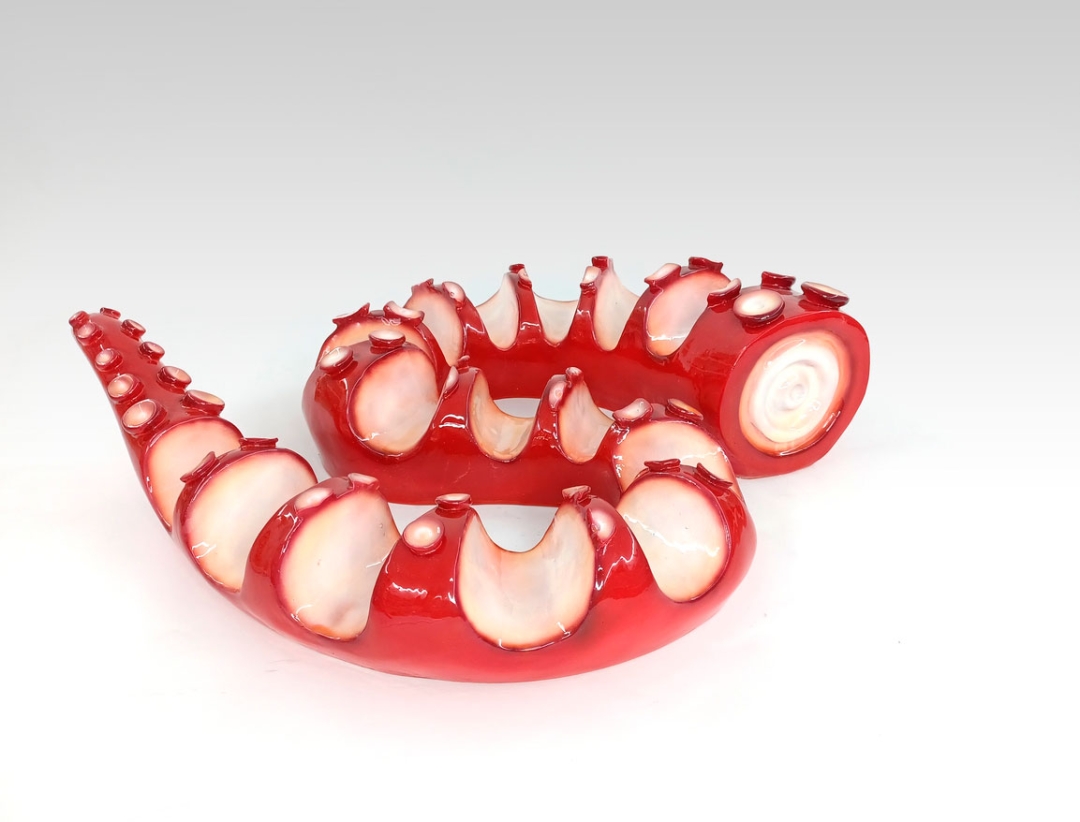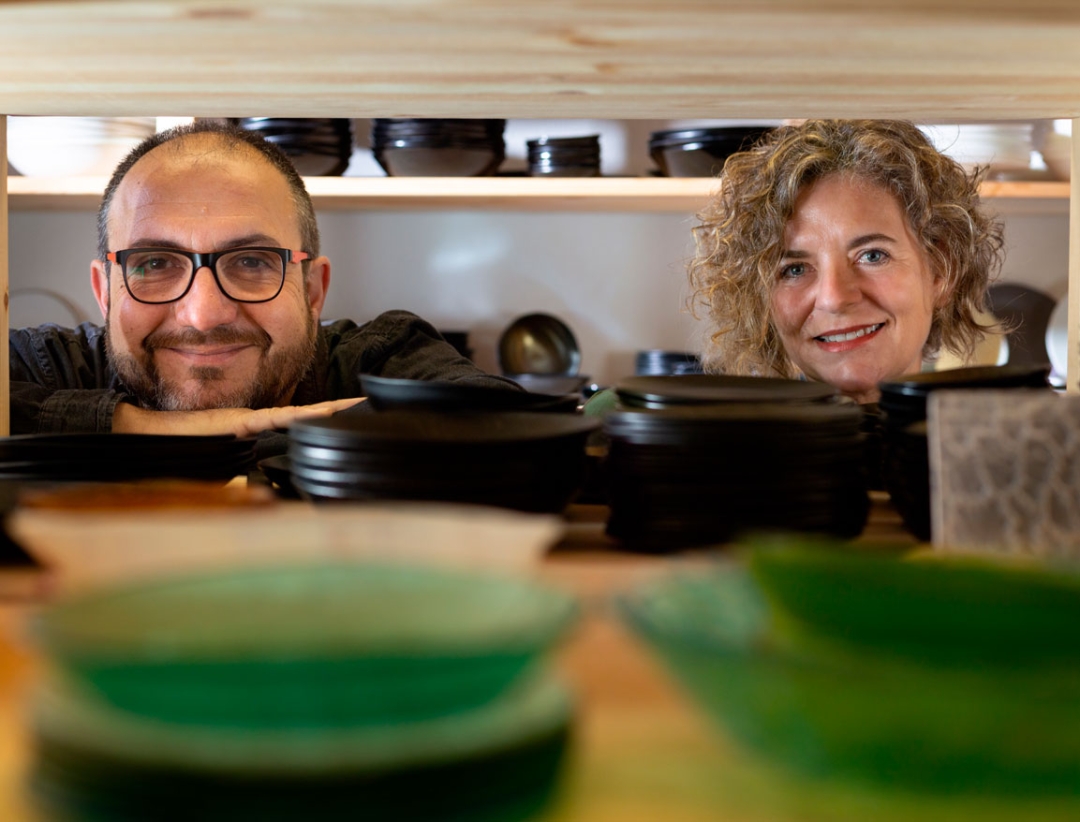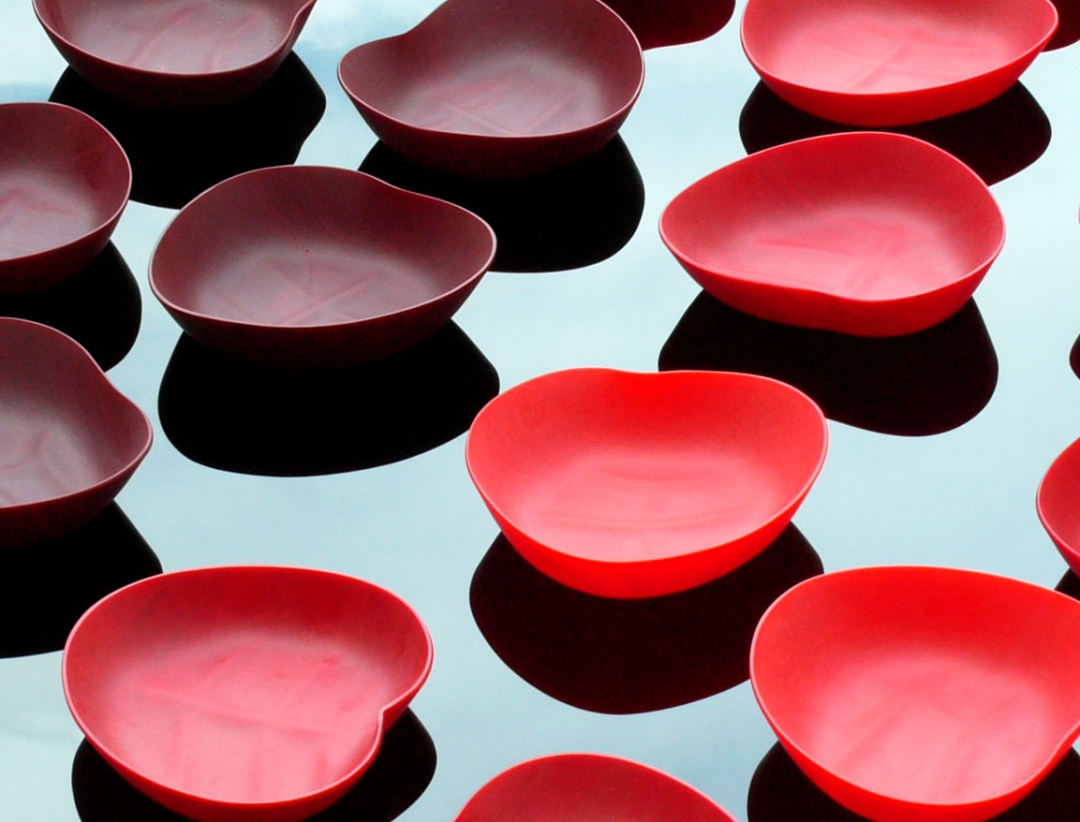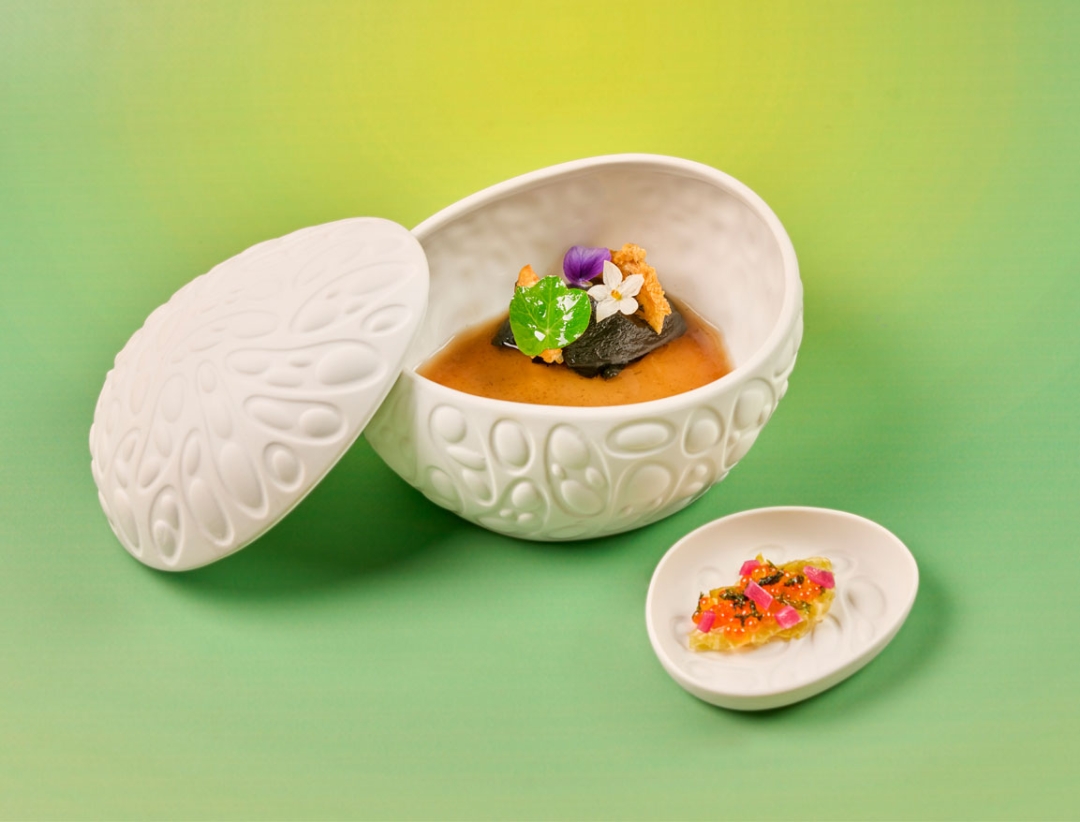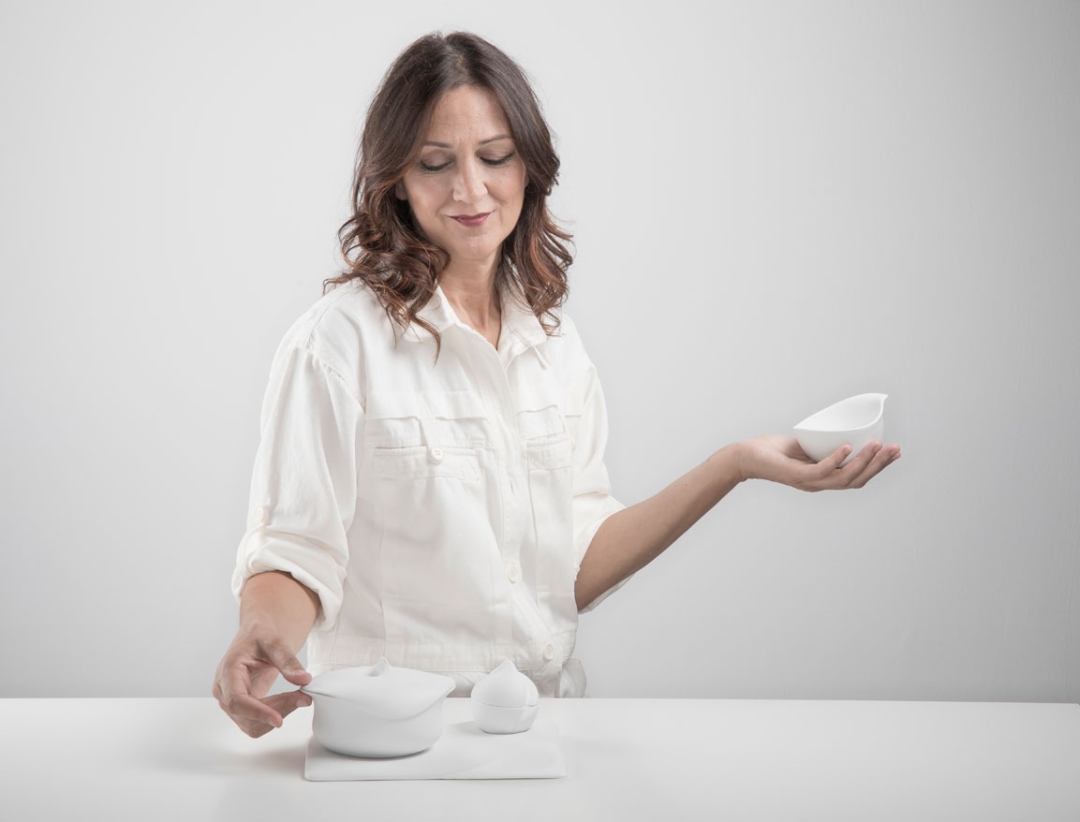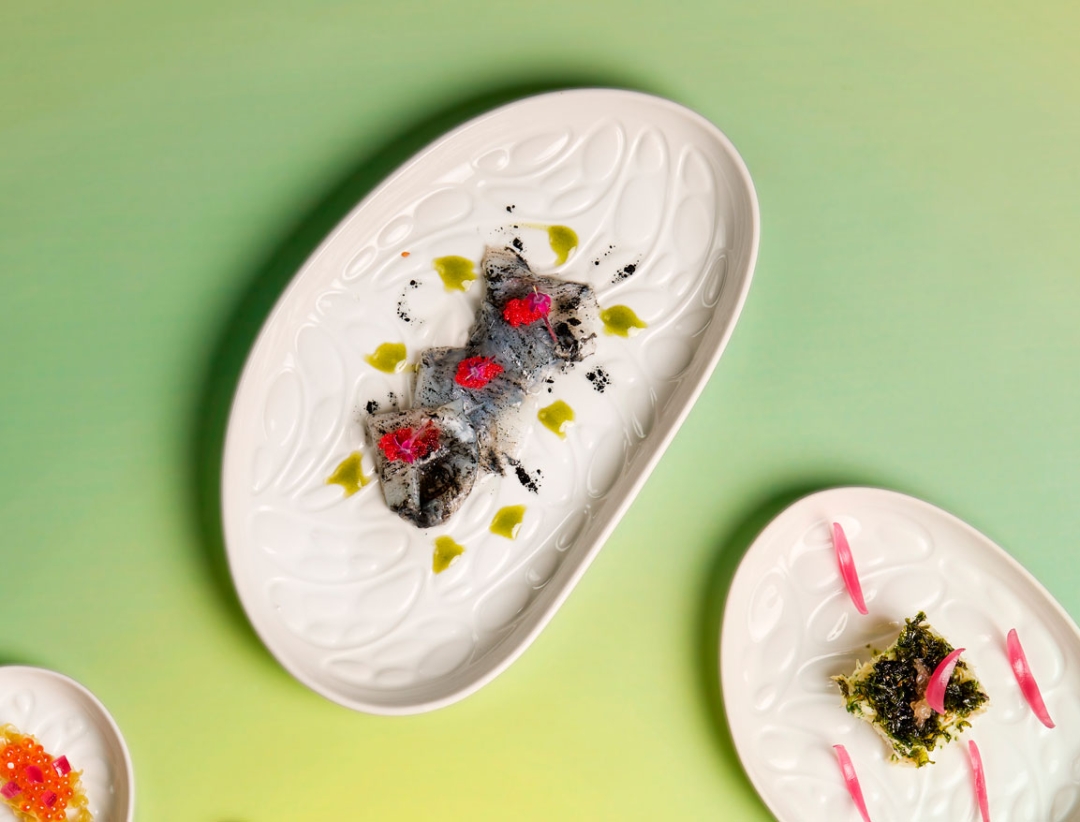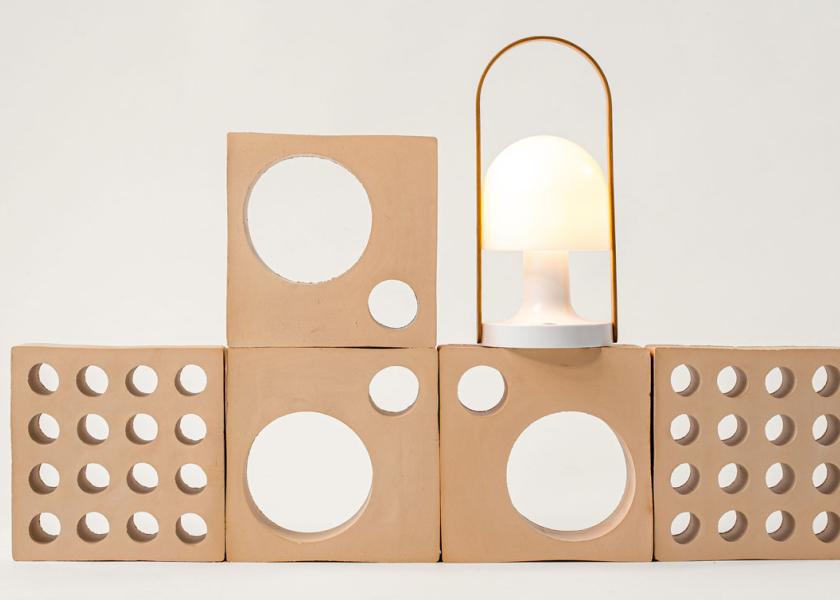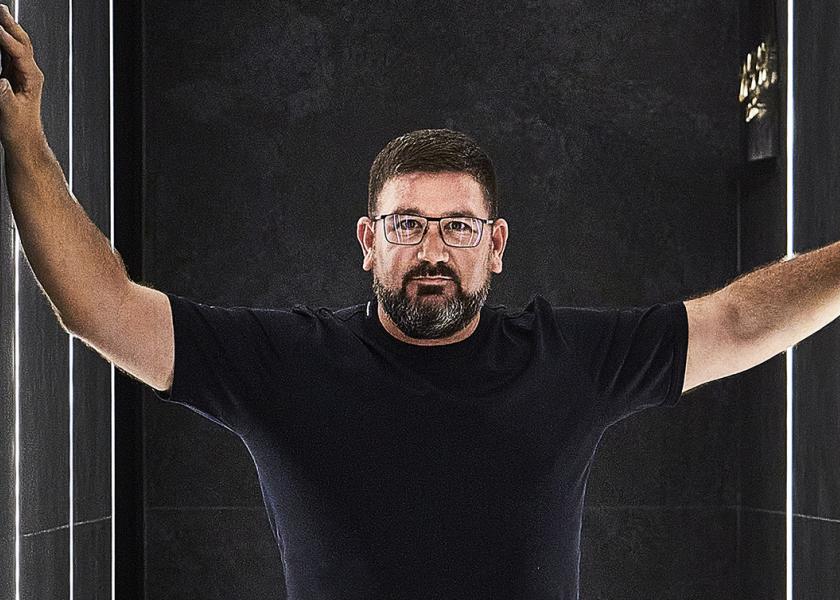Dinnerware designers
At the service of chefs
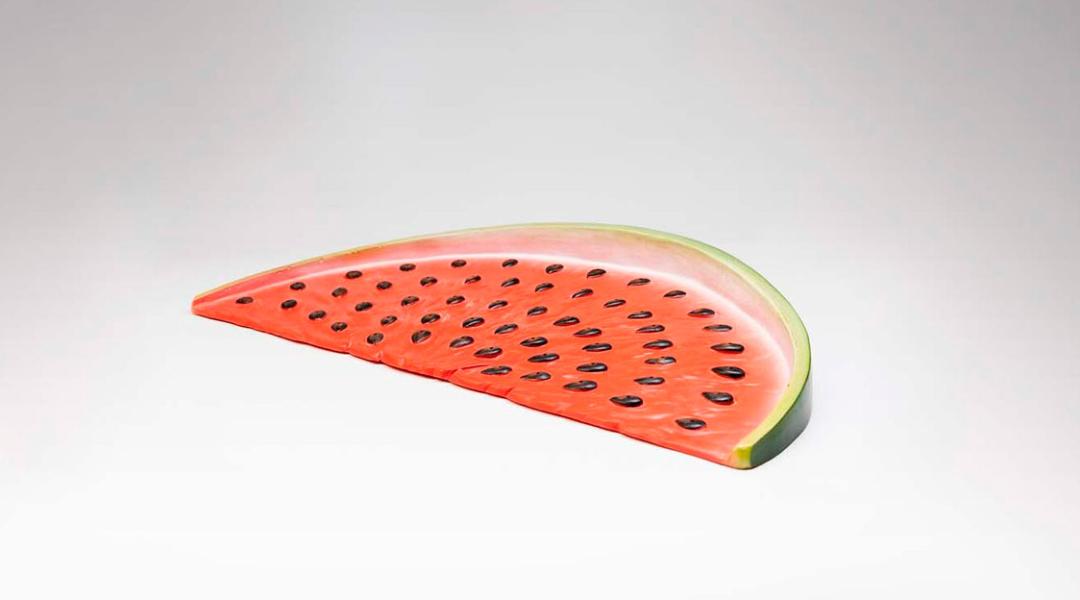
Once again, this year, Spanish haute cuisine is at the cutting edge of the world. The Best Chef Awards 2023 recently confirmed this. A ‘status’ that dinnerware designers contribute to with the dinner service great chefs present their dishes on. We chat to José Piñero (El Taller de Piñero), Ana Roquero (Cookplay) and Xavier Vega (Luesma & Vega) about their work, which combines artisanship, creativity, innovation, and sustainability.
Spanish gastronomy is admired around the world. In the latest edition of The Best Chef Awards —held on the 20th of November—, 14 Spanish chefs were ranked among the top 100 in the world, five of them in the top 10. We’re talking about Dabiz Muñoz (1st), Albert Adrià (2nd), Andoni Luis Aduriz (5th), Mateu Casañas, Oriol Castro and Eduard Xatruch (7th), Joan Roca (8th), Ángel León (13th), Javier and Sergio Torres (20th), Eneko Atxa (26th), Quique Dacosta (30th), Diego Guerrero (42nd), Bittor Arginzoniz (51st), Paco Roncero (60th), Paco Morales (82nd), Fina Puigdevall and Martina Puigvert (91st). A group of chefs who’ve turned creativity and innovation into their hallmark, taking care of every last detail in the dishes they offer their diners. Because that’s the only way to reach the pinnacle of excellence. And one of those details is the dinnerware, each of the pieces that their exquisite mouthfuls are served on.
“Gastronomy is growing in sophistication. The quality of the food isn’t the only thing that matters, how it is presented is also important. Visuals are essential.” This is according to José Piñero, from El Taller de Piñero, one of the designers who collaborates with the best chefs in the country, even coming up with pieces for one dish in particular. “The piece we create is completely harmonious with the food,” he notes. This business model is different to that of Ana Roquero, from Cookplay. “We don’t work with a particular chef, but rather make our own collections. We work with porcelain and produce in small batches, so that the pieces are more affordable and accessible to the public at large,” she assures us. For their part, at Luesma & Vega (Premio Nacional de Artesanía 2020), they work similarly to Piñero. “We make exclusive collections for chefs —explains Xavier Vega, who, leads the company alongside Ester Luesma— and we are inspired by nature and landscape. Then we add them to a catalogue, which is a good starting point for other chefs.” The three of them have one thing in common, that they all produce everything in Spain.
“Gastronomy is growing in sophistication. The quality of the food isn’t the only thing that matters, how it is presented is also important" — Piñero
Chefs place increasingly more importance on dinnerware and not only because it visually supports the presentation of their dishes. “Dinnerware covers two key aspects —declares Vega—: functionality, focused on solving plating issues, and narrative, aimed at reinforcing the chef’s discourse. Each chef is different, and dinnerware allows them to construct their own narrative. Therefore, the main thing is responding to their needs.” Helping chefs is also Ana Ronquero’s main mission. “We design pieces that help chefs improve the presentation of their dishes. We believe that food is the star and that’s why we choose a minimalist style, using neutral colours.” Piñero’s pieces, which use more saturated colours and bolder designs, are very different to those of Roquero, but nevertheless, respond to chef requests. “Chefs convey what they want and they’re my inspiration. I usually do my sketches with colouring pencils and send them my ideas as I go. For me, it is a responsibility and I share the entire process with them,” he confesses.
The relationship these creators have with haute cuisine came about by chance. “In 2003 —Vega tells us—, we were lucky to receive a visit from the El Bulli team and, shortly after, they invited us to become part of their design team. In 2011, given the interest from restaurants like Celler de Can Roca, Mugaritz or Quique Dacosta, we decided to specialise.” When Roquero launched Cookplay, she didn’t imagine serving big chefs. “Ten years ago, we decided to create a different food design brand, more centred on functionality. But, by design, our pieces quickly caught the attention of restaurants. Our first customer was the restaurant Felix, designed by Philippe Starck and located in The Peninsula Hotel in Hong Kong,” she reminisces. On his part, Piñero confesses that he never even dreamt of having a place within this sector and it all started after a meeting with Albert Adrià. “When I spoke to Albert about what we do at the workshop, his face lit up and he told me I was the person he was looking for. This is how our collaboration with Heart Ibiza came about. Adrià is very generous and shared his discovery with other chefs, and that’s how Paco Roncero, Dani García or Dabiz Muñoz started knocking on my door. I was lucky to start working with the best.”
“Each chef is different, and dinnerware allows them to construct their own narrative. Therefore, the main thing is responding to their needs” — Vega
Innovation, sustainability, and talent
Dinnerware designers aren’t oblivious to the concept of innovation, which has made the chefs they work with. “Innovation is inherent to design. I try to get away from what my colleagues do to make truly innovative collections,” Roquero declares. When we ask Piñero about innovation, he directly references a piece he created for Celler de Can Roca: el Nou Món. “It was a globe with a series of snacks from various places floating around it. It worked like a cryptographer and had an inner mechanism that made the globe open when dinners guessed the origin of the snacks correctly,” he explains. Vega enjoys when chefs force him to innovate, to make different things. “We already know how to make a soup plate, but we love tackling new pieces; it opens up a world of possibilities and becomes a challenge.”
“Innovation is inherent to design. I try to get away from what my colleagues do to make truly innovative collections”— Roquero
Each of them, within their possibilities, also cares about sustainability. “Sustainability has been important to us since the beginning —Roquero declares—. Because, today, a designer must provide the world with sustainability. Four years ago, we launched a disposable collection made with sugarcane, a material that can replace plastic.” At Luesma & Vega they work with glass, which gives them a chance to reuse pieces. “Our dinnerware can be repaired, but it can also be transformed. When a chef gets tired of one of our collections, we can melt their dinnerware set and give them a new one made with the same material,” Vega tells us. El Taller de Piñero, which employs between 50 to 60 people from different professions (blacksmiths, carpenters, moulders, varnishers, painters, etc.), works with a really limited production, which reduces its environmental impact. Their pieces are so exclusive they never die. “On many occasions, chefs move them to another business, or they use them as decorative elements. They’re never thrown away,” he assures us.
These chefs and designers share one thing in common: talent. “Talent is based on three parameters —Roquero recites. The first is attitude, which you need from an early age to learn. The second is perseverance, because if you’re not hardworking, it’s really hard to develop your talent. And the third is passion, because if you love something, it’s with you all hours of the day.” Piñero adds another parameter: bravery, which in his case involves always looking for formulas to avoid saying no to his customers. “Talent lies in banning ‘no’ from your vocabulary,” he declares. What does Vega think? “For me, talent is related to being committed to the profession, to feeling satisfied with your work and the pursuit of excellence.”

